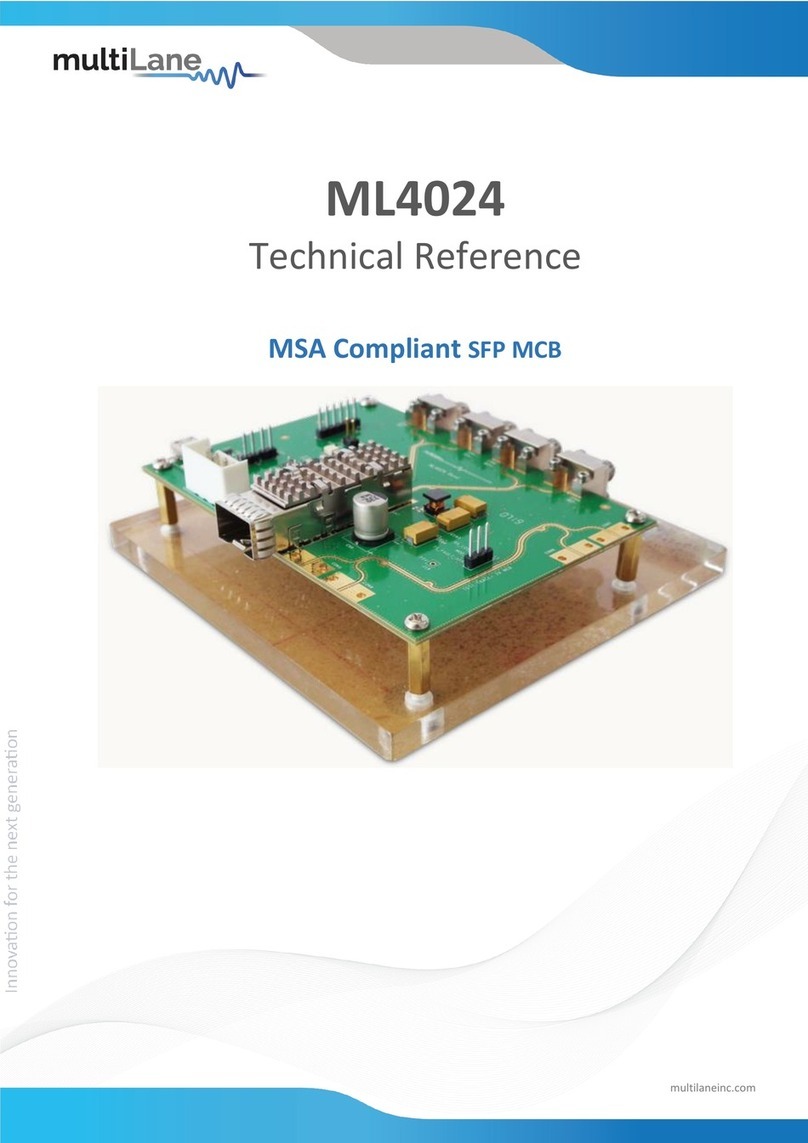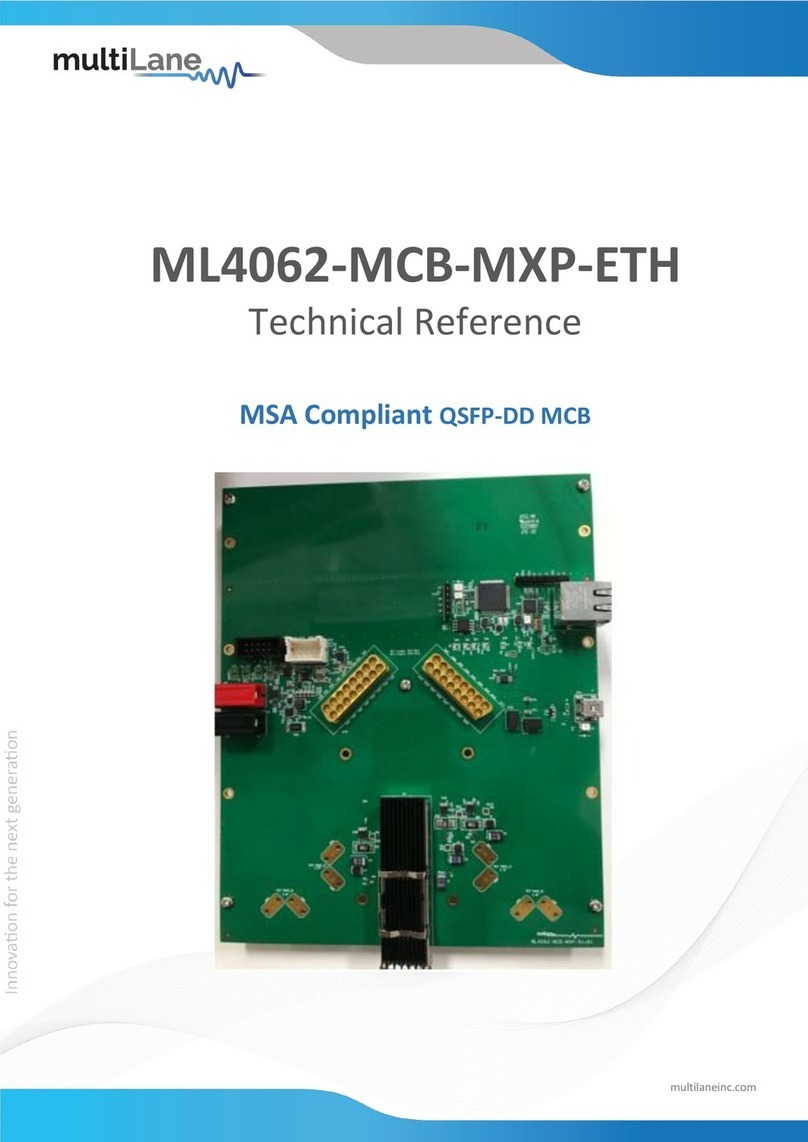GENERAL SAFETY PRECAUTIONS ......................................................................................................... 1
PREFACE ............................................................................................................................................ 2
CONTACT MULTILANE SAL .................................................................................................................. 3
PRODUCT DESCRIPTION...................................................................................................................... 4
MODEL AND PACKAGE CONTENT ........................................................................................................................ 4
OVERVIEW...................................................................................................................................................... 4
KEY FEATURES ................................................................................................................................................. 5
TARGET APPLICATIONS...................................................................................................................................... 5
PRODUCT SOFTWARE ......................................................................................................................... 6
MINIMUM PC REQUIREMENTS ........................................................................................................................... 6
INSTRUMENT PORTS........................................................................................................................... 7
HOW TO CONNECT THIS INSTRUMENT ................................................................................................ 8
CONNECTING THROUGH AN ETHERNET CABLE........................................................................................................ 8
CONNECTING THROUGH USB CABLES .................................................................................................................. 9
INSTALLATION.................................................................................................................................. 10
SYSTEM START-UP..........................................................................................................................................10
CONNECT TO THE INSTRUMENT VIA ETHERNET:.................................................................................................... 10
MEASUREMENTS:............................................................................................................................. 12
IMPEDANCE PROFILE:...................................................................................................................................... 12
Calibration ............................................................................................................................................ 12
Impedance Profile Measurement......................................................................................................... 12
Calibration for DAC Testing ..................................................................................................................13
Measurement for DAC..........................................................................................................................13
INSERTION LOSS:............................................................................................................................................ 15
Calibration ............................................................................................................................................ 15
Insertion Loss Measurement ................................................................................................................ 16
DAC Testing .......................................................................................................................................... 16
De-embedding ......................................................................................................................................17
RETURN LOSS:...............................................................................................................................................18
Calibration ............................................................................................................................................ 18
Return Loss Measurement.................................................................................................................... 19
Gating for DAC Testing......................................................................................................................... 19
NEAR-END CROSSTALK:................................................................................................................................... 21
Calibration ............................................................................................................................................ 22
NEXT Measurement.............................................................................................................................. 22
FAR-END CROSSTALK:..................................................................................................................................... 23
Calibration ............................................................................................................................................ 23
FEXT Measurement .............................................................................................................................. 23
INTEGRATED CROSSTALK NOISE: ....................................................................................................................... 24
CORRELATION WITH OTHER MEASUREMENTS:...................................................................................................... 25
SAVING DATA:............................................................................................................................................... 28
SAMPLING OSCILLOSCOPE: ............................................................................................................... 29
USB DRIVER INSTALLATION............................................................................................................... 34
USB DRIVER INSTALLATION ON WINDOWS XP, WINDOWS 7PLATFORMS ................................................................34
USB DRIVER INSTALLATION ON WINDOWS 8PLATFORMS:..................................................................................... 35
USB DRIVER INSTALLATION ON WINDOWS 10 PLATFORMS:................................................................................... 36






























